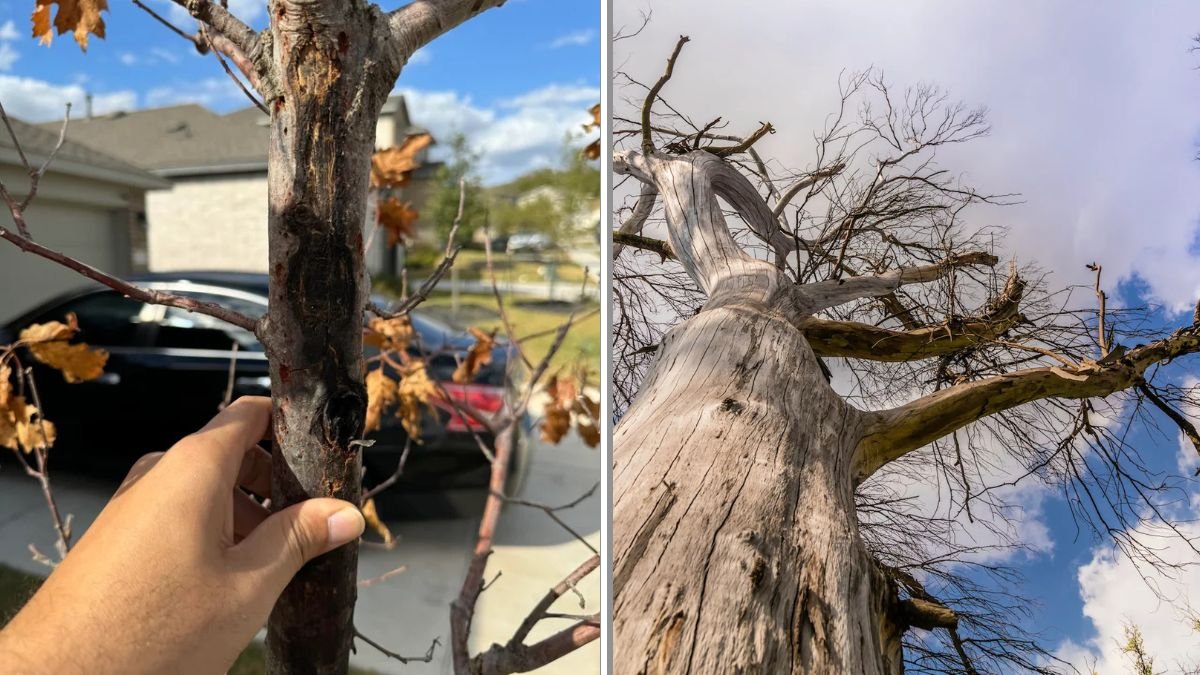A healthy tree can last for decades, even centuries, adding shade, beauty, and value to your property. But sometimes trees begin to decline—leaves thin out, branches die back, or bark cracks and peels. If left unchecked, a once-thriving tree can wither beyond repair.
The good news? Many trees that look like they’re on their last legs can actually be saved with the right care. Whether your tree is struggling due to drought, pests, disease, or poor soil conditions, early intervention is often the difference between revival and removal.
Here’s a detailed, step-by-step guide on how to revive a dying tree before it’s too late.
Step 1: Identify the Signs of a Dying Tree
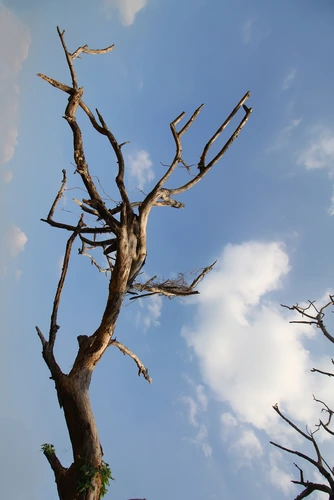
Before you can save your tree, you need to determine if it’s truly dying—or just stressed. Some signs to look for:
- Leaf issues: Yellowing, browning, curling, or failure to sprout in spring.
- Bare branches: Sections of the canopy look thin or lifeless compared to others.
- Bark damage: Peeling, cracks, or missing bark that exposes the inner wood.
- Fungal growth: Mushrooms or conks at the base, which can signal internal rot.
- Deadwood: Branches that snap easily and don’t produce buds.
- Root problems: Exposed, damaged, or decayed roots.
If your tree shows one or two of these symptoms, it may just be stressed and still savable. But multiple signs may indicate advanced decline.
Step 2: Diagnose the Cause of Stress
A tree won’t heal unless you address the root problem. Common culprits include:
- Water stress: Either too little or too much water can cause decline.
- Poor soil conditions: Compaction, low nutrients, or incorrect pH can weaken trees.
- Pests and diseases: Borers, beetles, fungi, and bacteria can attack weakened trees.
- Improper planting: Trees planted too deeply, too shallowly, or in unsuitable locations often struggle.
- Physical damage: From lawnmowers, construction, or storms.
- Environmental stress: Pollution, salt exposure, or sudden weather shifts.
Look closely at your tree’s environment to narrow down the cause. Sometimes it’s a combination of factors.
Step 3: Prune Away Dead or Diseased Branches
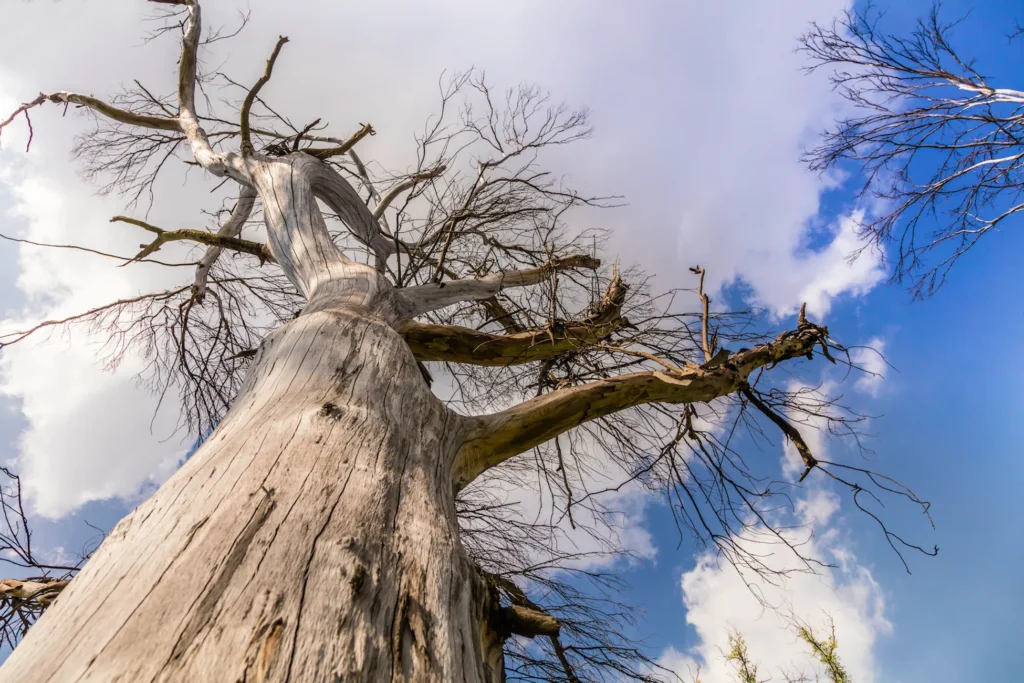
One of the quickest ways to help a tree recover is to remove damaged wood. Dead or diseased branches drain energy that the tree could redirect to healthy growth.
- Use sharp, clean pruning shears or a saw.
- Cut just outside the branch collar (the swollen area where branch meets trunk).
- Avoid topping the tree—cutting the main leader trunk stunts growth and invites disease.
- If more than 30% of the tree appears dead, revival may not be possible.
Step 4: Water Wisely
Trees need water to survive, but overwatering can be just as harmful as drought.
- Check soil moisture: Stick a screwdriver into the soil near the root zone. If it’s dry more than 2–3 inches down, it needs water.
- Deep watering: Instead of frequent light watering, give the tree a slow, deep soak once or twice a week.
- Mulch: Apply 2–4 inches of mulch around the base (but not touching the trunk) to conserve moisture and regulate soil temperature.
For drought-stressed trees, consistent watering over several months can help them bounce back.
Step 5: Improve Soil Health
Unhealthy soil often lies at the root of tree decline. You can boost soil conditions in several ways:
- Aeration: Loosen compacted soil around the root zone to allow air, water, and nutrients to penetrate.
- Organic matter: Add compost or organic mulch to improve soil fertility and structure.
- Fertilization: Apply a slow-release, tree-specific fertilizer if soil tests show deficiencies. Avoid high-nitrogen fertilizers, which can stress weak trees.
- pH balance: Some trees are sensitive to soil acidity. Conduct a soil test and adjust pH as needed with lime or sulfur.
Step 6: Protect the Roots
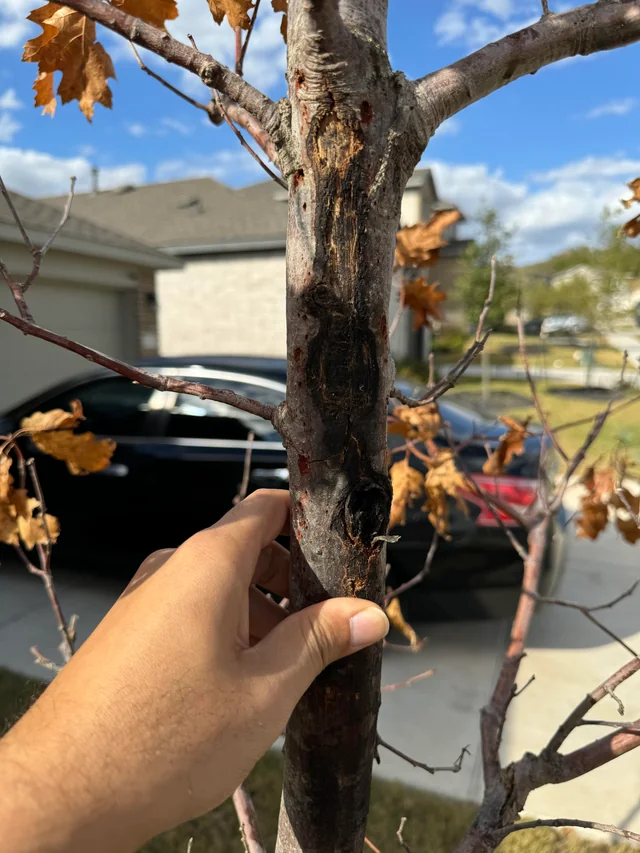
Roots are a tree’s lifeline, and damage to them often leads to decline.
- Avoid parking vehicles or heavy equipment near the root zone.
- Keep lawnmowers and string trimmers away from the base of the tree.
- Do not pile soil or mulch directly against the trunk (this can cause rot).
- In construction areas, install barriers to protect roots from compaction.
If roots are already exposed or damaged, cover them lightly with soil and mulch to protect against further harm.
Step 7: Manage Pests and Diseases
Weakened trees are more vulnerable to pests and diseases. If you suspect an infestation:
- Inspect regularly: Look for bore holes, sawdust-like frass, or unusual leaf spotting.
- Prune infested branches: Remove affected areas before pests spread further.
- Apply treatments: Insecticidal soaps, horticultural oils, or fungicides may be needed depending on the issue. Always follow label directions.
- Encourage natural predators: Birds, ladybugs, and beneficial insects help control pests naturally.
If you’re unsure about the problem, an arborist can diagnose and recommend treatment.
Step 8: Provide Seasonal Protection
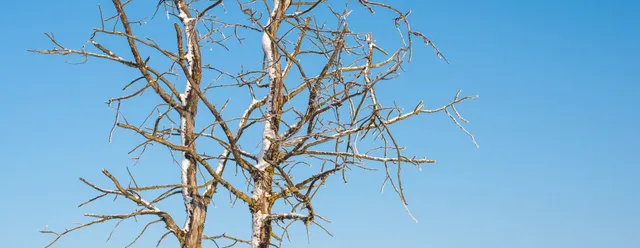
Sometimes trees struggle because of extreme weather conditions. Protect them with seasonal care:
- Winter: Wrap young trees with burlap to prevent sunscald and windburn.
- Spring: Watch for late frost damage and cover sensitive species if needed.
- Summer: Provide extra water during heatwaves.
- Fall: Apply fresh mulch to insulate roots before winter.
Step 9: Call an Arborist if Needed
Not all tree problems can be solved with DIY care. If your tree has major structural damage, widespread disease, or large dead sections, consult a certified arborist. They can:
- Diagnose underlying issues
- Provide professional pruning or cabling
- Test soil and recommend treatments
- Advise on whether removal is necessary
When It’s Too Late
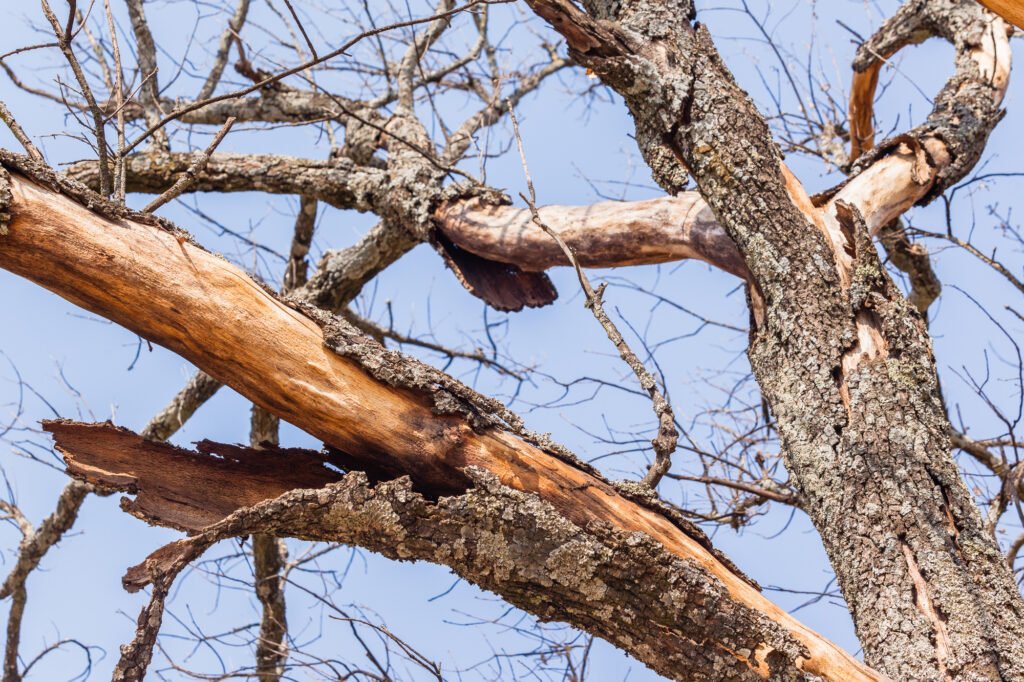
Sadly, not every tree can be saved. If the trunk is hollow, more than half the canopy is dead, or fungal conks cover the base, removal may be the safest option. Dead trees are hazards—they can drop limbs or topple unexpectedly.
Final Thoughts
Reviving a dying tree takes patience and persistence, but many struggling trees can bounce back with the right care. Start by identifying symptoms, addressing the root cause, and providing proper water, soil care, and pruning. Protect roots, monitor pests, and seek professional help if needed.
A tree is more than just a plant—it’s an investment in your landscape and environment. With timely action, you can often save your tree before it’s too late, ensuring it thrives for years to come and continues to provide shade, beauty, and value to your home.
